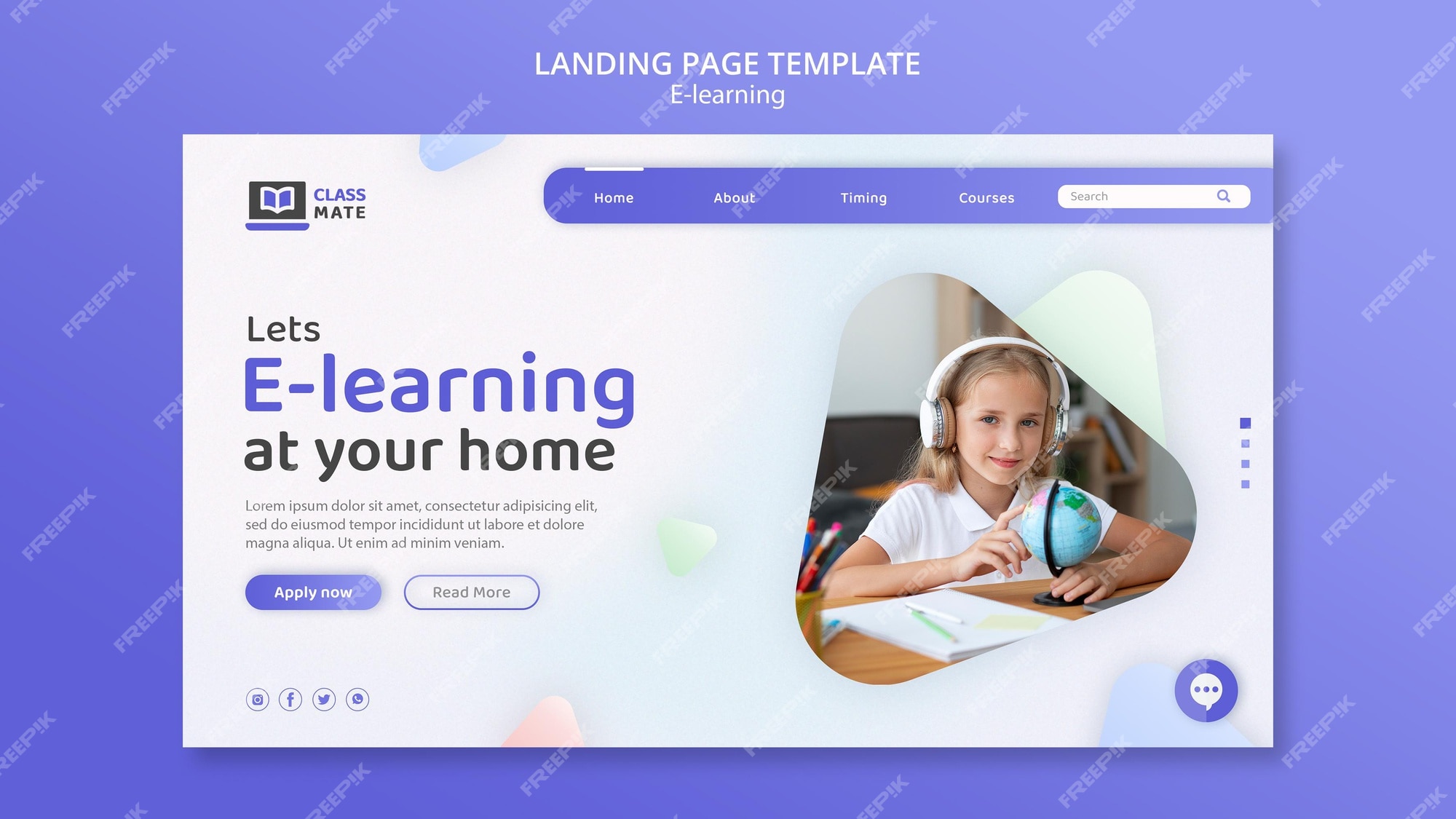How Do You Create An Online Course And Sell It?
To create an online course and sell it, you will need to:
- Determine the topic and audience for your course.
- Create a course outline and content, including videos, quizzes, and other materials.
- Choose a platform to host your course, such as Udemy or Teachable.
- Set a price for your course and promote it to your target audience.
- Continuously update and improve your course to ensure customer satisfaction.
It is also important to market your course effectively through social media, email marketing, and other channels to reach your target audience.
Additionally, offering a money-back guarantee or a free preview of the course can help attract potential customers
Table of Contents
Choosing A Topic And Audience For Your Online Course
Choosing a topic and audience for your online course is one of the most important steps in creating and selling a successful course.
It is important to select a topic that you are passionate about and have expertise in, as this will make it easier for you to create high-quality content and market your course to the right audience.
When selecting a topic, consider the current market demand for that topic. Research popular online course platforms and look for course topics that are in high demand and have a proven track record of success.
Additionally, consider your target audience and their specific needs and interests when choosing a topic.
Once you have selected a topic, it is important to conduct market research to understand your target audience’s pain points, goals, and learning preferences.
This will help you create a course that meets their specific needs and addresses their problems.
It’s also important to have a clear and specific target audience, this will help you to create a personalized messaging and content that will resonate with them and increase the chances of them buying your course.
Finally, you should also consider the competition in your chosen topic and audience, if there are many competitors in your niche, you will need to find ways to stand out and differentiate your course from the others
Developing An Outline And Creating Course Content
Once you have chosen a topic and target audience for your online course, the next step is to develop an outline and create course content.

The course outline should include an introduction, learning objectives, and a clear structure for the content.
When creating the content for your course, it is important to keep in mind the needs and goals of your target audience.
The course should be designed to be interactive and engaging, with a mix of different types of content such as videos, quizzes, and written materials.
When creating videos, it is important to keep them short and to the point, use clear and concise language, and provide relevant examples and real-world scenarios.
Also include closed captions and transcripts in order to make your course more accessible to a wider audience.
Quizzes and other interactive elements can help to keep students engaged and can also be used to assess their understanding of the material.
The quizzes should be designed to be challenging but not too difficult, and should be used to reinforce key concepts from the course.
It’s also important to use a consistent format and design throughout the course, this will help to keep the students engaged and make the course look professional and polished.
Finally, you should also include a conclusion and a summary of key takeaways in the course, this will help the students to remember the main points and apply them in their own life or work.
It’s also important to test your course before launch, this will help you to identify and fix any errors or issues, and also to get feedback from a small group of students
Selecting A Platform To Host Your Course
Choosing a hosting platform for your online course is an important step in making and selling it. There are several popular platforms to choose from, each with its own set of features and benefits.

Some popular platforms for hosting online courses include:
- Udemy: A popular platform that allows you to create, market, and sell your course to a global audience. Udemy takes a percentage of your sales as a commission.
- Teachable: A platform that allows you to create and sell your course, with features such as course bundles and memberships. Teachable offers a free plan and paid plans with different features and pricing.
- Skillshare: A platform that offers a subscription model, where students pay a monthly fee to access a wide variety of courses, including yours.
- Thinkific: A platform that allows you to create and sell your course, with features such as course bundles, memberships and affiliate program.
When selecting a platform, consider the following factors:
- Audience Reach: Consider the size of the platform’s audience and whether it aligns with your target audience.
- Monetization Options: Consider how the platform allows you to monetize your course, such as through one-time sales or subscriptions.
- Course Creation And Management Tools: Consider the platform’s tools for creating and managing your course, such as video hosting and course analytics.
- Customization Options: Consider the platform’s options for customizing the look and feel of your course, such as branding and design options.
- Support And Resources: Consider the platform’s resources and support for course creators, such as community forums and documentation.
Ultimately, the platform you choose will depend on your specific needs and goals for your course. It is a good idea to test different platforms and compare their features and pricing before making a final decision.
Pricing And Monetizing Your Course
Pricing and monetizing your online course is an important step in creating and selling a successful course. There are several different pricing models to choose from, and it is important to choose the one that is best suited to your course and target audience.
Some popular pricing models include:
- One-Time Payment: This model involves charging a one-time fee for access to the entire course. This is a good option for courses that have a high level of value and will be used for a long period of time.
- Subscription-Based: This model involves charging a recurring fee, such as monthly or annually, for access to the course. This is a good option for courses that involve ongoing support and updates.
- Freemium: This model involves offering a basic version of the course for free and charging for access to additional content or features. This can be a good option for courses that are designed to be introductory or to generate leads.
- Pay-What-You-Want: This model allows students to choose the amount they want to pay for the course, it can be a good option for a course that is very valuable and the students are willing to pay more than the minimum suggested price.
When pricing your course, consider the following factors:
- Market Demand: Research the prices of similar courses in your niche to determine a fair and competitive price for your course.
- Course Value: Consider the level of value your course provides to your target audience and price it accordingly.
- Production Costs: Consider the time, resources, and costs involved in creating your course, and factor these into your pricing.
It’s also important to think about the currency and prices based on where your audience is.
In addition to pricing your course, there are also several monetization strategies that can be used to generate additional revenue from your course. These can include:
- Upselling to additional courses or services
- Offering a course bundle
- Using affiliate marketing to promote related products or services.
It’s also important to test different pricing strategies and continually assess the performance of your course, this will help you to optimize your pricing and monetization strategies over time.
Marketing And Promoting Your Online Course
Marketing and promoting your online course is an essential step in creating and selling a successful course. There are several different strategies and tactics that can be used to reach and attract potential students to your course.
Some popular methods of marketing and promoting your course include:
- Social Media Marketing: Use social media platforms such as Facebook, Instagram, and Twitter to share updates, testimonials, and promotions for your course.
- Email Marketing: Build and maintain an email list of potential and current students, and use this list to send updates, promotions, and special offers for your course.
- Content Marketing: Create valuable and informative content related to your course topic, such as blog posts, videos, and infographics, and share it on your website and social media channels.
- Influencer Marketing: Reach out to influencers in your niche and ask them to promote your course to their audience.
- Paid Advertising: Use paid advertising platforms such as Google AdWords or Facebook Ads to target potential students and drive traffic to your course landing page.
- Community Building: Building a community around your course topic, this can be done through social media groups, forums, or live Q&A sessions.
It’s also important to use a mix of different marketing strategies, this will help you to reach a wider audience and increase the visibility of your course.
When promoting your course, it’s important to use a clear and compelling messaging that highlights the value and benefits of your course to the target audience. Also, include testimonials, screenshots, and other social proof to build trust and credibility with potential students.
Finally, it’s important to track and analyze your marketing efforts, this will help you to understand what strategies are working and what needs to be improved, and optimize your marketing efforts over time.
Legal And Compliance Considerations
When creating and selling an online course, it is important to consider legal and compliance issues to ensure that your course is in compliance with all relevant laws and regulations.

Some legal and compliance considerations include:
- Intellectual Property: Ensure that all of the content in your course is original and that you have the rights to use any third-party materials included in the course.
- Privacy And Data Protection: Ensure that you are in compliance with all relevant privacy and data protection laws, such as the General Data Protection Regulation (GDPR) and the California Consumer Privacy Act (CCPA). This includes obtaining consent from students to collect, use, and share their personal data, and having a privacy policy in place that clearly explains how their data will be used.
- Consumer Protection: Ensure that you are in compliance with consumer protection laws, such as the Federal Trade Commission (FTC) Act, which prohibits deceptive and misleading marketing practices. This includes providing accurate and honest information about your course, including the course content, price, and any guarantees or refunds offered.
- Accessibility: Ensure that your course is accessible to individuals with disabilities in compliance with laws such as the Americans with Disabilities Act (ADA) and Section 508 of the Rehabilitation Act. This includes providing alternative text for images, closed captions for videos and transcripts, and providing alternative ways to access interactive elements such as quizzes.
It’s also important to consider compliance with regulations related to taxes, currency, and international trade, if you plan to sell your course to a global audience.
It is a good idea to consult with a legal professional who is experienced in e-learning and online course creation to ensure that your course is in compliance with all relevant laws and regulations.
How To Use Email Marketing And Social Media To Promote Your Course
Email marketing and social media are both powerful ways to spread the word about your online course and reach people who might be interested in taking it.
Email Marketing:
- Build an email list of potential and current students by using opt-in forms on your website, landing pages, or social media.
- Create a series of automated email campaigns to nurture leads and promote your course. These can include welcome emails, course previews, testimonials, and special offers.
- Use segmentation and personalization in your email campaigns to target specific groups of students and create a more personalized experience.
- Use A/B testing to optimize your email campaigns and subject lines, to improve open rates and click-through rates.
Social media marketing:
- Use social media platforms such as Facebook, Instagram, Twitter, and LinkedIn to promote your course and reach a wider audience.
- Use visual content such as images and videos to showcase your course and make it more engaging.
- Use paid advertising on social media platforms to target specific groups of students and drive traffic to your course landing page.
- Use social media groups, live Q&A sessions, and webinars to create a community around your course and to interact with potential and current students.
- Use social media analytics to track the performance of your campaigns and to optimize your strategy over time.
When using email marketing and social media to promote your course, it is important to have a clear and consistent messaging that highlights the value and benefits of your course to the target audience.
Also, include social proof such as testimonials and screenshots of your course, to build trust and credibility with potential students.
It’s also important to use a mix of different strategies, this will help you to reach a wider audience and increase the visibility of your course
Creating A Landing Page And Sales Funnel For Your Course
Creating a landing page and sales funnel for your online course is an important step in promoting and selling your course.

A landing page is a standalone web page that is designed to persuade visitors to take a specific action, such as signing up for your course or making a purchase.
A landing page should be designed to be simple and user-friendly, with a clear and compelling message that highlights the value and benefits of your course.
A sales funnel is a series of steps that guide potential students through the process of discovering, evaluating, and purchasing your course.
A typical sales funnel includes the following steps:
- Awareness: This is the top of the funnel where you attract potential students to your course through various marketing channels.
- Interest: At this stage, potential students are interested in your course and are looking for more information about it.
- Desire: At this stage, potential students have a clear understanding of the benefits of your course and are considering purchasing it.
- Action: At this stage, potential students have made a decision to purchase your course and are prompted to take action by signing up or making a purchase.
Creating a landing page and sales funnel for your course can help to increase conversions and revenue. A landing page should be designed to be visually appealing, easy to navigate, and optimized for conversions.
It should include a clear and compelling headline, a brief overview of the course, a list of benefits, a sign-up or buy button, and social proof such as testimonials and screenshots of your course.
A sales funnel should be designed to guide potential students through the buying process, using clear and compelling messaging, and using elements such as lead magnets, opt-in forms, and calls to action.
It’s also important to use analytics tools to track the performance of your landing page and sales funnel, this will help you to identify areas that need improvement and to optimize your strategy over time.
The Importance Of Community Building And Engagement With Students
Course to a wider audience through word-of-mouth marketing. Additionally, an engaged community can provide valuable feedback and ideas that can be used to improve your course and create new course offerings.

A strong community also creates a sense of belonging and shared purpose among students, which can lead to increased motivation and engagement.
This can also give students a chance to meet each other and work together, which can be good for their personal and professional growth.
Furthermore, an engaged community can also provide additional revenue streams through memberships, sponsorships, and partnerships.
In summary, community building and engagement with students is an important aspect of creating and selling a successful online course.
It can help to increase student satisfaction, retention, and revenue, and also can help to promote your course to a wider audience.
It’s important to make community building and engagement a priority and to continuously strive to improve and foster a strong sense of community among your students.